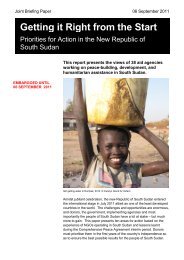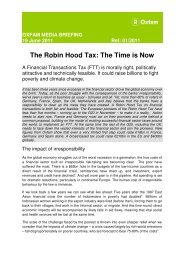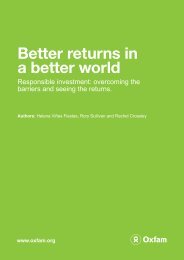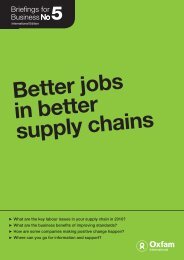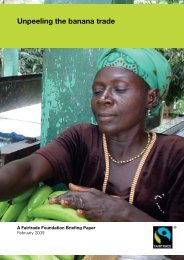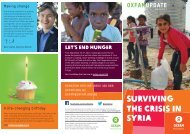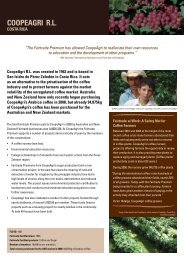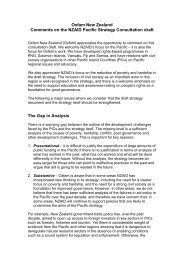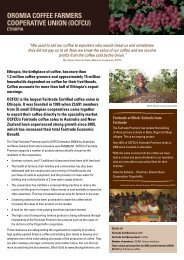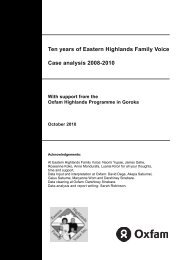Growing a Better Future - Oxfam International
Growing a Better Future - Oxfam International
Growing a Better Future - Oxfam International
- No tags were found...
Create successful ePaper yourself
Turn your PDF publications into a flip-book with our unique Google optimized e-Paper software.
Figure 11: The predictedimpact of climate change onmaize productivity to 2030Figure 12: The predicted impact ofclimate change on regional staple foodproduction to 2030Percentage changes in maize productivity relative to 2030 baseline-5-10-15-20-25-30-35-40-45South andSE Africa W Africa C Africa E Africa C America AndeanPercentage changes in domestic output relative to 2030 baseline-5-10-15-20-25BrazilwheatC AfricamaizeW AfricamaizeE AfricamaizeChinapaddyriceOtherE andSE AsiapaddyriceFigure 13: The predicted increase in numbersof malnourished children in sub-SaharanAfrica in the context of climate changeChildren, thousands100090080070060050040030020010002010 2030 2050The impact of climate change on food prices is clearlyclosely linked to the impacts that climate change willhave on crop production. Here too, our scenarios pointtowards some disturbing warning signals. Some of themajor internationally traded grains included in our modelare important food staples for a large group of lowincomecountries. For example, maize is a major stapleacross much of sub-Saharan Africa, Central Americaand the Andean countries. In each case, our scenariopoints to climate change damaging agriculturalproductivity (see Figure 11).Climate change will have adverse effects on aggregateproduction volumes (Figure 12), as well as agriculturalproductivity (Figure 11), across all developing regions.Projections raise particularly worrying concerns formaize production in sub-Saharan Africa. Moreover,the trends captured in our scenarios to 2030 areconsistent with long-term trend analysis carried out byIFPRI for a wider set of crops. That analysis points to amarked climate change effect in reducing yields ofsweet potatoes and yams, cassava, and wheat by 2050(respectively 13, 8, and 22 per cent lower than under ascenario without climate change). 6226



